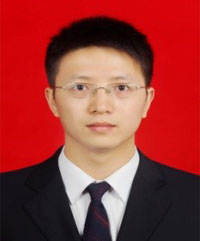Invited Talk: Ming-Chun Tang, Chongqing University

Short Bio:
Ming-Chun Tang (S’12–M’13–SM’16) received the Ph. D. degree in radio physics from the University of Electronic Science and Technology of China (UESTC), in 2013. From August 2011 to August 2012, he was also with the Department of Electrical and Computer Engineering, The University of Arizona, Tucson, AZ, USA, as a Visiting Scholar. He is currently a full Professor in the School of Microelectronics and Communication Engineering, Chongqing University, China. His research interests include electrically small antennas, RF circuits, metamaterial designs and their applications.
Prof. Tang is the Senior Member of the Chinese Institute of Electronics. He was a recipient of the National Science Fund for Excellent Young Scholars in 2019. He was a recipient of the Best Student Paper Award in the 2010 International Symposium on Signals, Systems and Electronics (ISSSE2010) held in Nanjing, China. His Ph.D. students received Best Student Paper Awards from the IEEE 7th Asia-Pacific Conference on Antennas and Propagation (2018 IEEE APCAP) held in Auckland, New Zealand, 2019 IEEE International Applied Computational Electromagnetics Society (ACES) Symposium, Nanjing, China, 2019 IEEE International Workshop on Electromagnetics: Applications and Student Innovation Competition, Qiangdao, China, and 2019 Cross Strait Quad-Regional Radio Science and Wireless Technology Conference, Taiyuan, China. He is the founding Chair of the IEEE AP-S / MTT-S Joint Chongqing Chapter. He serves on the Editorial Boards of several journals, including IEEE Access, Electronics Letters and IET Microwaves, Antennas & Propagation. He has also served on the review boards of various technical journals, and many international conferences as a General Chair, TPC Member, Session Organizer, and the Session Chair.
Title: Transmission-reflection-integrated metasurfaces for manipulating the electromagnetic waves
Abstract:
In this talk, two kinds of transmission-reflection-integrated metasurfaces developed by our group are summarized. On the one hand, a cascaded metasurface that integrates the resonant and geometrical phase cells is introduced to control the transmitted and reflected waves simultaneously. The metasurface not only can control the reflected beam at any LP modes, but also behaves the diversified electromagnetic (EM) responses under different incident polarizations in the transmitted mode. We further employed this metasurface to design a low-scattering lens antenna. As a result, the gain of a conventional patch antenna has been enhanced about 6.4 dB, and the significant RCS reduction performance has been realized in X band. On the other hand, an electrically tunable metasurface that can dynamically manipulate the reflection magnitude and realize high-efficient transmission at two distinctive frequency bands is demonstrated. By electrically controlling the sheet resistance of the graphene capacitor, we have experimentally verified that the developed metasurface can shift the reflection magnitude from -5 to -20 dB over a wide frequency band of 5~15 GHz, and meanwhile realize a high transparent EM window with 3-dB transmission band covering from 23 to 25 GHz. |

